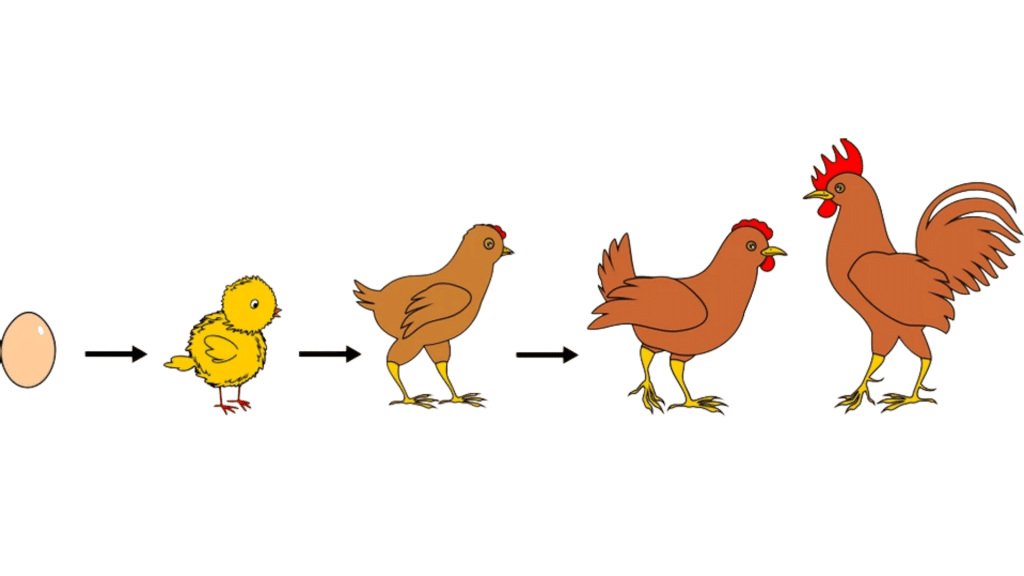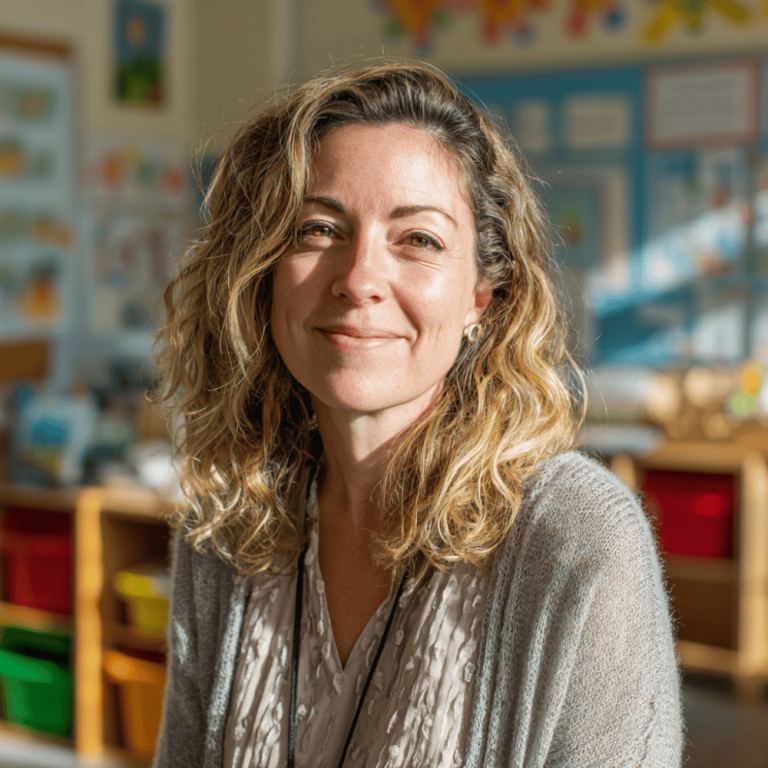Have you ever wondered how a tiny egg turns into a full-grown chicken? The chicken life cycle is a fascinating process that shows how a chick grows into a full adult chicken.
In this guide, I’ll walk you through each stage, from the egg to the adult bird, so you can see the changes step by step.
You’ll also find simple facts, like how many eggs a hen can lay, and the role of roosters. To make it easier, I’ve added visuals, videos, and activities you can use at home or in the classroom.
By the end, you’ll understand the full cycle and maybe even feel inspired to look at chickens in a new way.
What Do You Mean by Chicken Life Cycle?
The chicken life cycle is the natural process a chicken goes through from the very beginning as an egg to becoming an adult bird. It explains how chickens grow, change, and start the cycle again through new eggs.
This cycle is made up of clear stages. It shows how life begins inside the shell, moves through growth stages, and ends with a fully grown chicken that can lay eggs or fertilize them.
Understanding the chicken life cycle is important for farmers, students, and anyone curious about nature. It helps us see how living things depend on care, food, and time to grow.
Life Cycle of A Chicken: Different Stages
The chicken life cycle consists of several distinct stages. It begins with an egg, continues through growth and change, and ends with a fully grown chicken.
Each stage has its own role in shaping the bird’s life. By examining each one closely, you can see how a small egg develops into an adult chicken. Here’s the each stage described briefly:
1. The Egg Stage
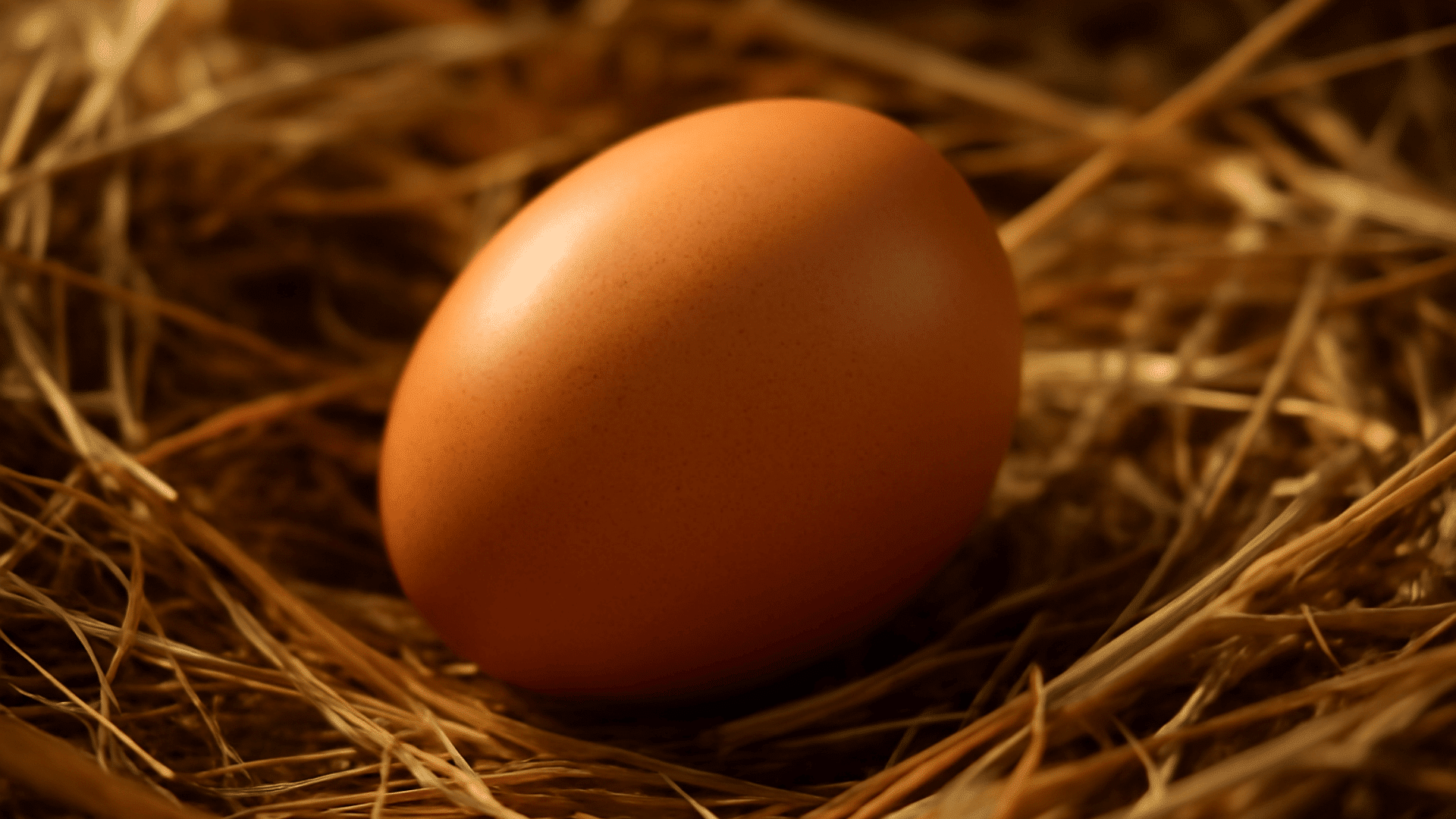
Every chicken starts as an egg. If the egg is fertilized by a rooster, it has the potential to grow into a chick. Unfertilized eggs will not develop, though they can still be eaten.
Inside the egg, the yolk provides food for the growing chick, while the shell and membranes give protection. The egg must be kept warm and moist to stay healthy. This usually happens naturally under a hen or with an incubator.
The egg stage lasts about 21 days. During this time, the embryo forms and grows. Without the right conditions, the life cycle cannot move forward.
2. Embryo Development Inside the Egg
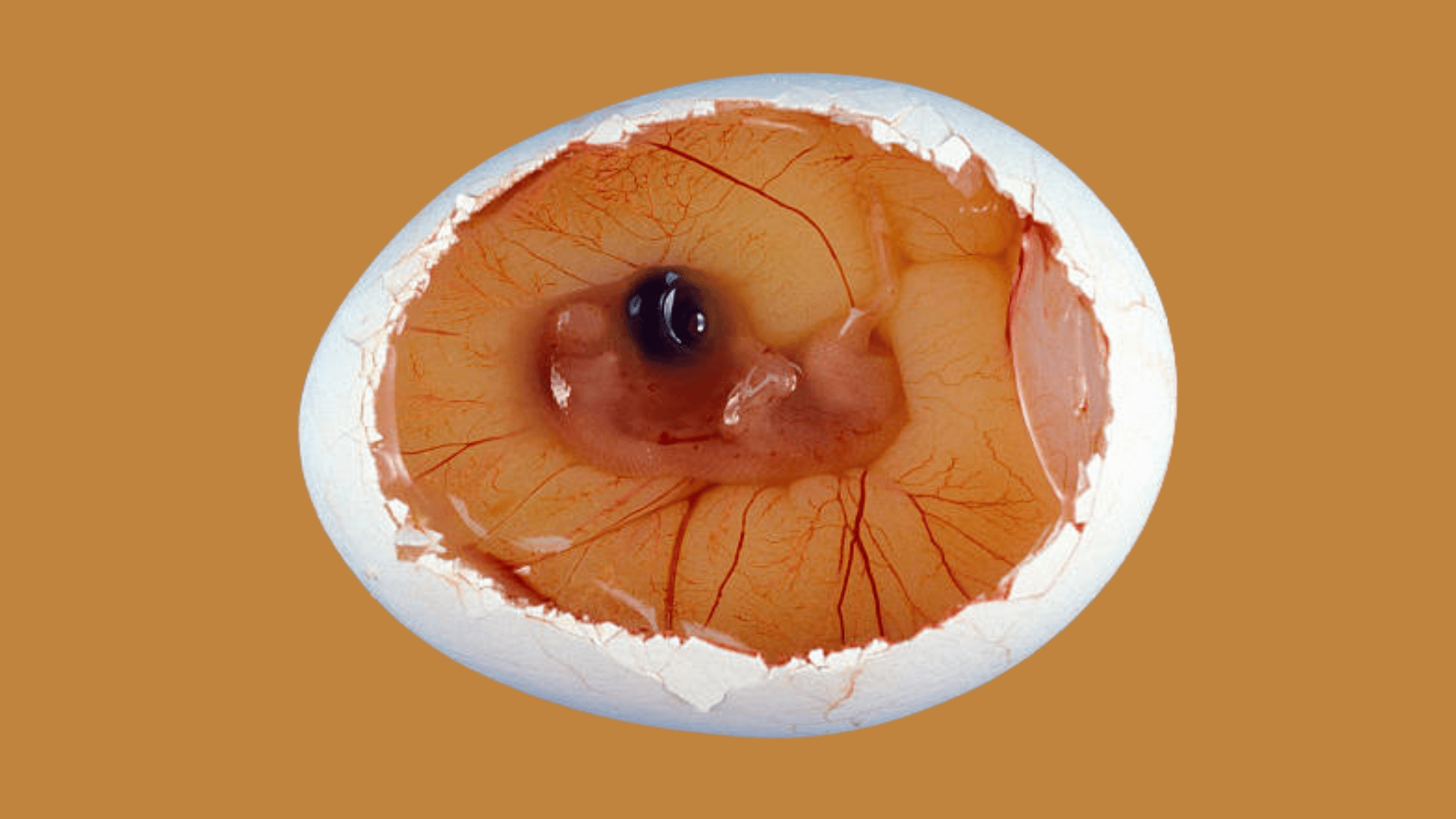
Once fertilized, the embryo begins to grow day by day. These fertilized chicken egg stages bring small changes that continue until hatching:
- By day 3, the tiny heart starts beating.
- Around day 7, wings, legs, and eyes form.
- By day 14, feathers, beak, and claws are visible.
The egg must be turned regularly to keep the chick from sticking to one side. Temperature and humidity are also critical. If these are not right, the chick may not survive. This stage shows the importance of careful care before hatching.
3. Hatching Stage
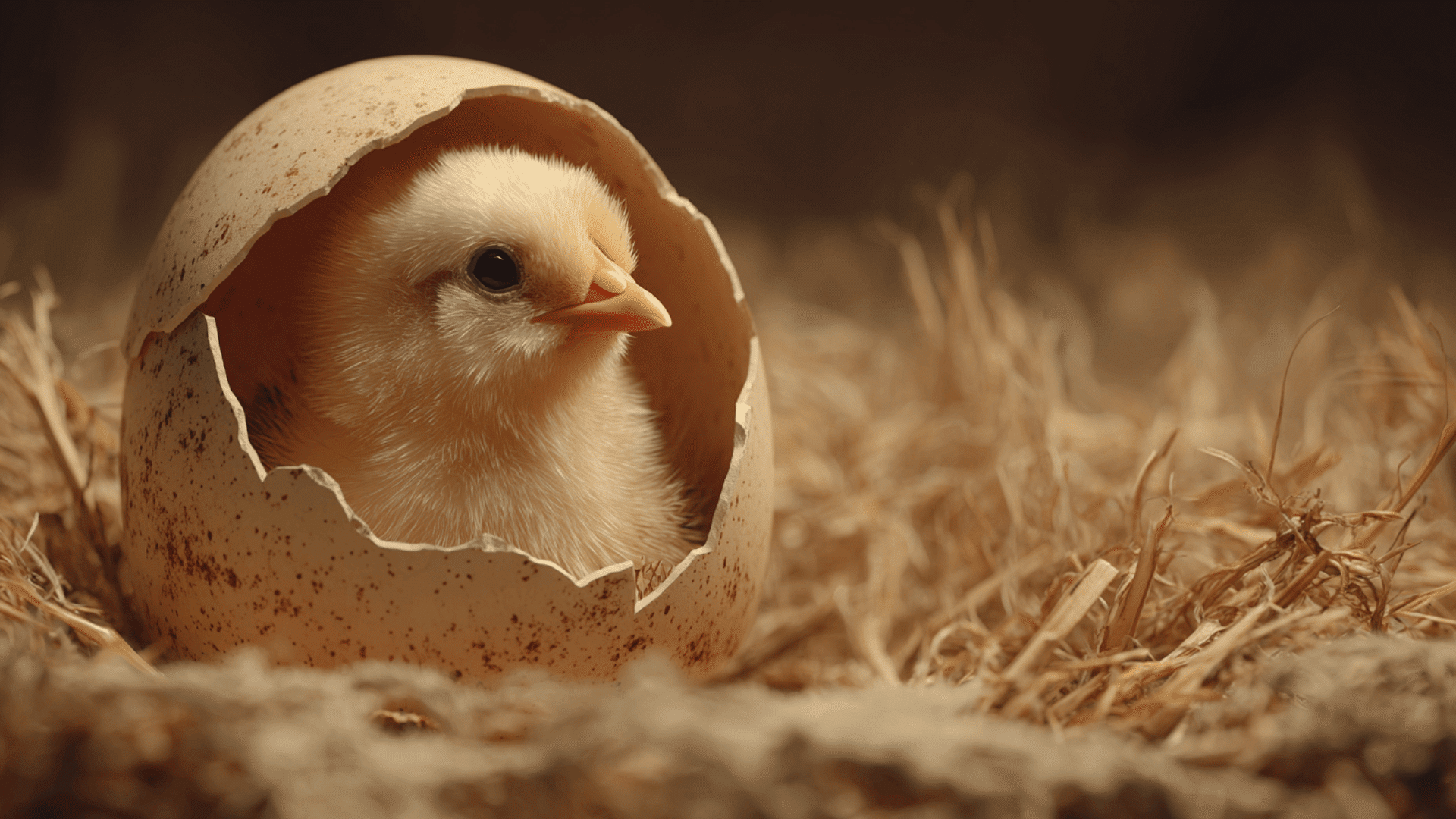
Hatching is one of the most dramatic moments in the chicken’s life cycle. It typically occurs around day 21, but the timing can vary slightly.
The chick begins the process by pecking a small hole in the shell, called “pipping.” This can take hours and requires a lot of effort. The chick uses a small, sharp tip on its beak, called the egg tooth, to break through.
Once it starts, the chick slowly works its way around the shell until it can push itself free. This stage is exhausting, but it marks the first time the chick enters the outside world.
4. Chick Stage
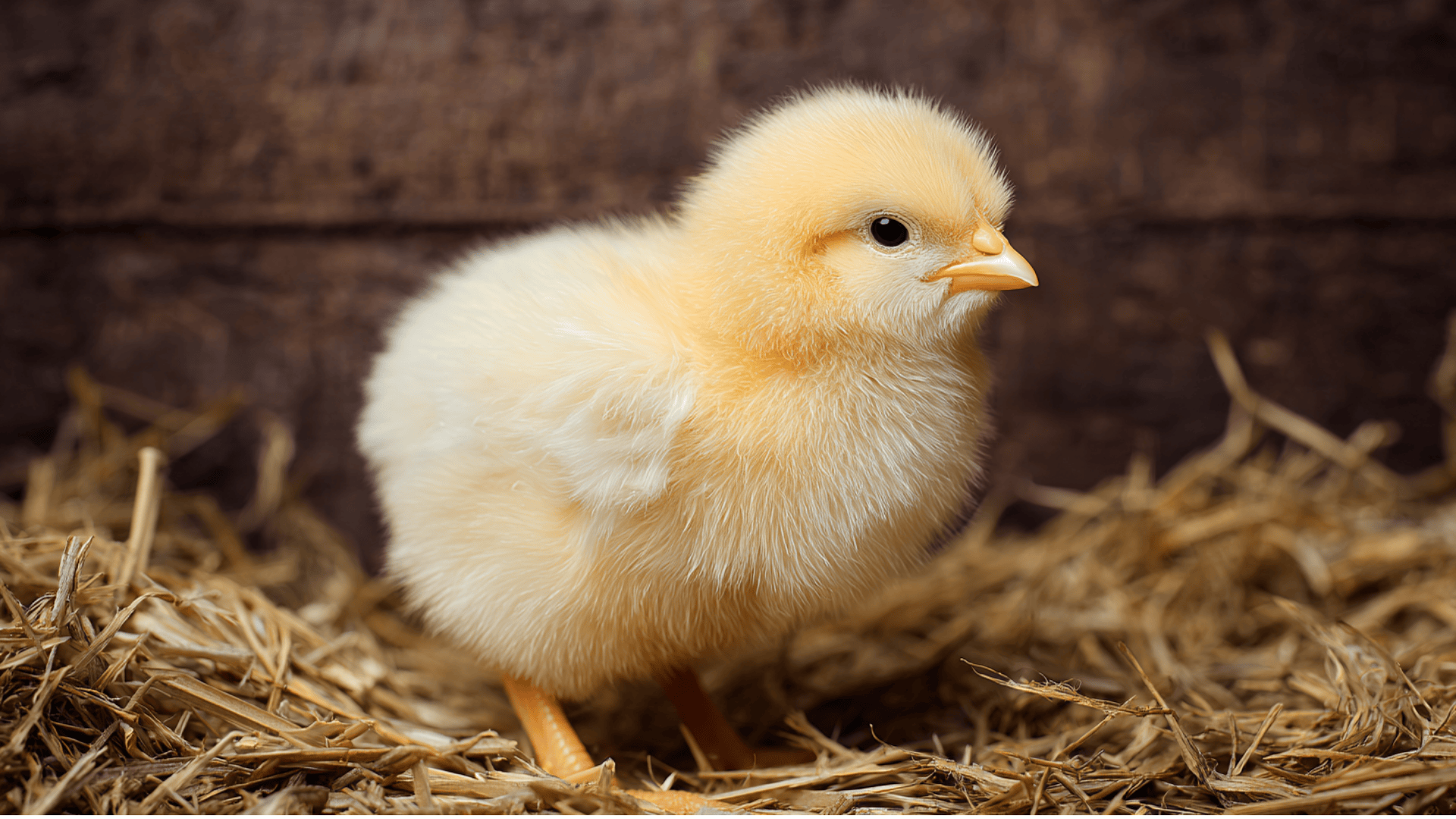
Right after hatching, the chick is small, weak, and covered in soft down feathers. It dries off in a few hours and begins to move around.
At this stage, the chick needs constant warmth because it cannot control its body temperature yet. Farmers or caregivers often use heat lamps or brooders for this. Clean water and starter feed provide the nutrients it needs.
In the first few weeks, the chick starts growing feathers, learning to peck, and learning its surroundings. This is a critical stage for survival and early growth.
5. Juvenile Stage (Pullet and Cockerel)
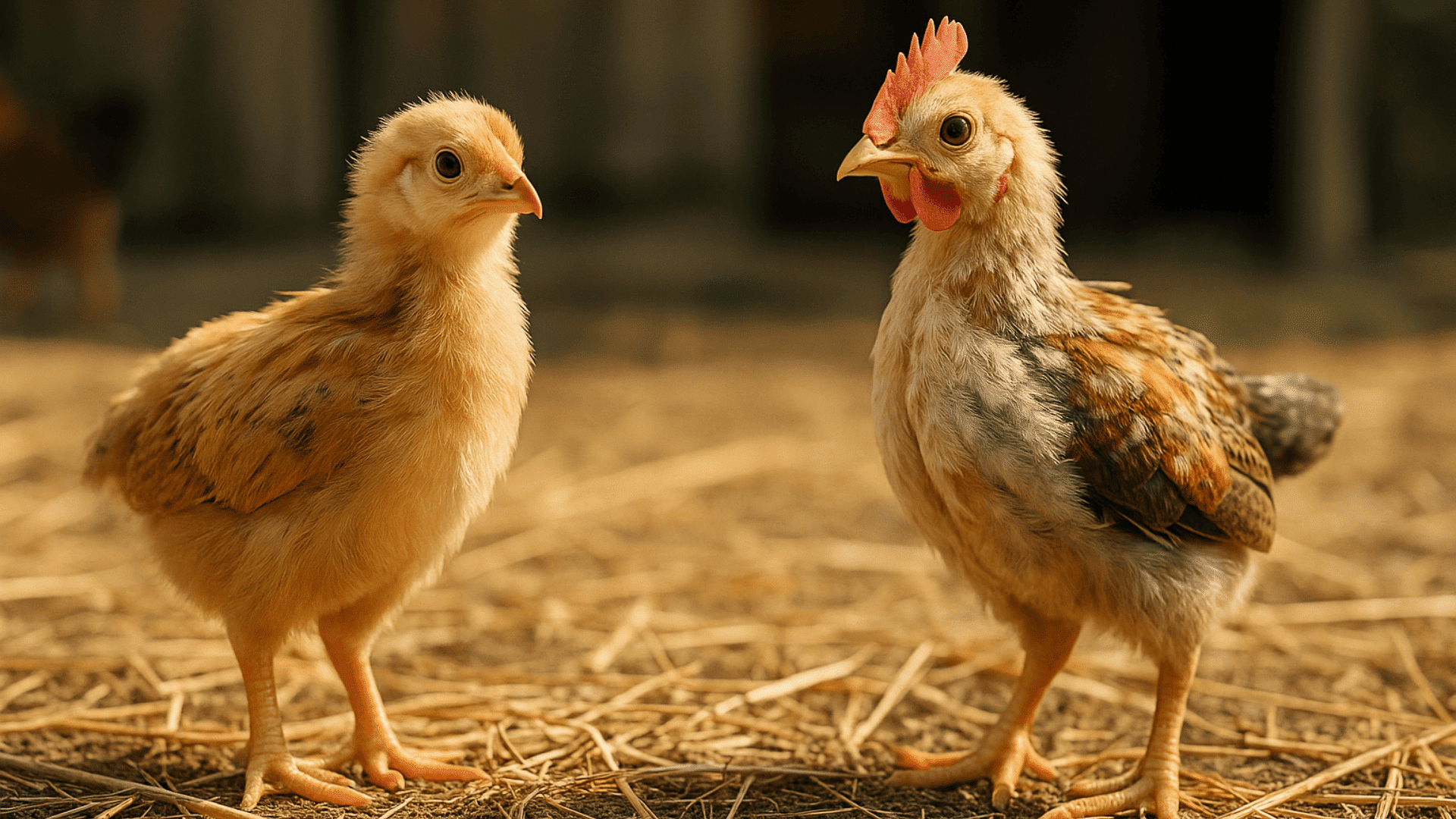
As chicks grow, they enter the juvenile stage. At this point, they are no longer fragile, but they are still not fully grown.
Feathers replace the soft down, giving them a more mature appearance. Their diet shifts toward grains and protein-rich food to support rapid growth. They also become more active and curious.
In this stage, pullets (young hens) and cockerels (young roosters) start to show differences. Roosters may grow larger combs and crow, while hens prepare for egg laying. Social order within the flock also becomes stronger.
6. Adult Stage
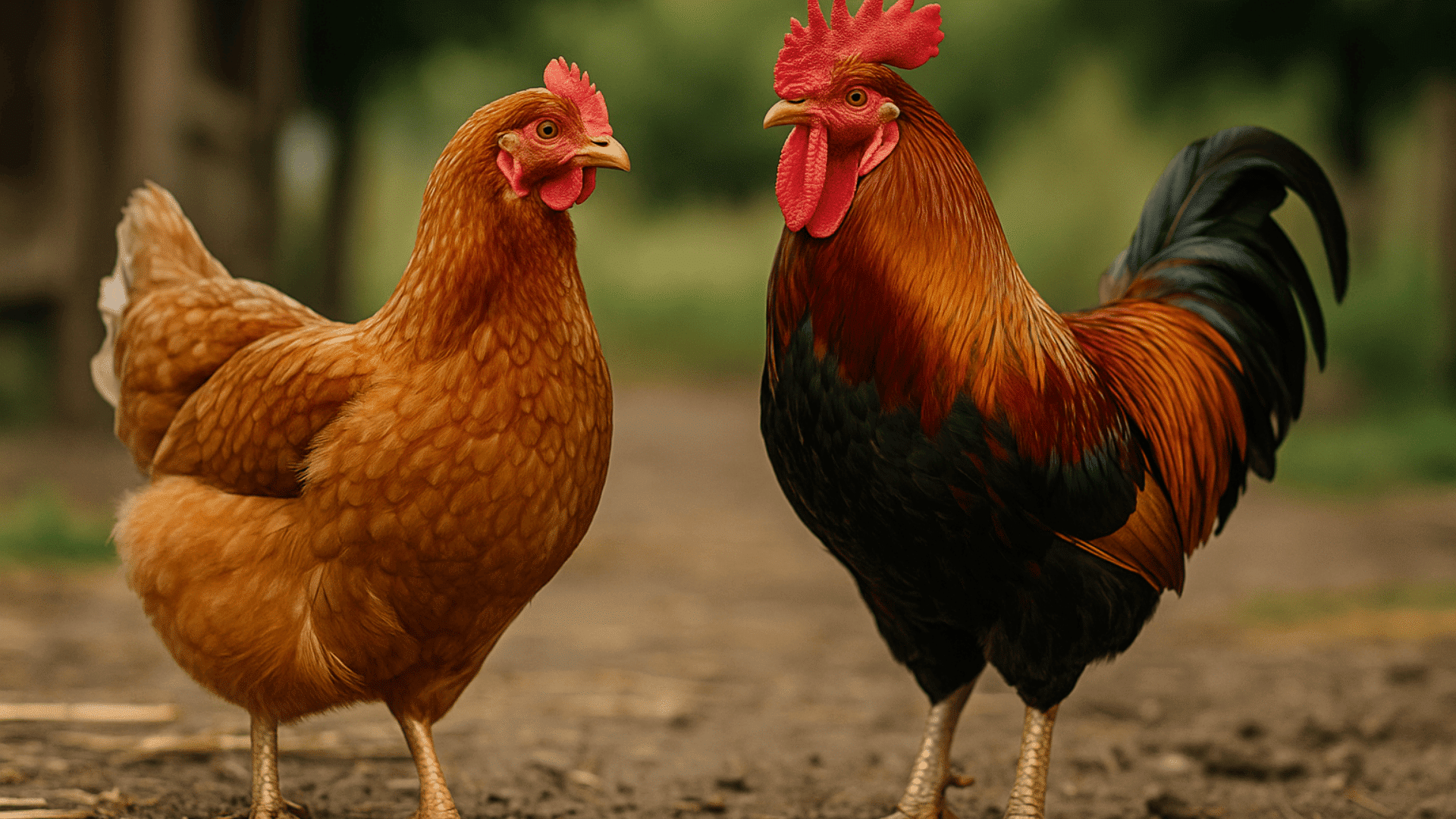
The final stage is adulthood, when chickens reach full size and maturity. Hens begin laying eggs at about 5–6 months old. Roosters become protective and take on their role in breeding.
Egg production is highest in the first two years. After that, it slows down, though hens can still live for several more years. Healthy care and a balanced diet can extend their productive and active life.
At this point, the life cycle comes full circle. Adult chickens create new eggs, starting the process again. This cycle keeps flocks strong and growing.
The life cycle of a chicken is a steady path of growth, change, and renewal. Each stage, from egg to adult, is important for survival.
By understanding these steps, we can see how life repeats itself and appreciate the care that chickens need along the way.
Facts About the Chicken Life Cycle
The chicken life cycle is full of interesting details that show how chickens live and reproduce. Knowing these facts makes it easier to understand how they grow and what they need.
- Average lifespan: Chickens can live 5–10 years on average. Some backyard chickens live longer with good care, while commercial chickens often have shorter lifespans due to farming practices.
- Egg production: A healthy hen can lay around 250–300 eggs in a year. The number depends on breed, diet, and living conditions. Egg laying slows down as the hen gets older.
- Backyard vs. commercial life cycle: Backyard chickens usually live longer and have a more natural cycle. They are raised for both eggs and companionship. Commercial chickens often live shorter lives, as they are raised mainly for egg or meat production.
- Role of roosters: Roosters do not lay eggs, but they play a crucial role in fertilization. Hens will lay eggs without a rooster, but those eggs will not develop into chicks.
These facts highlight how the chicken life cycle can vary based on environment and purpose. It also illustrates how hens and roosters play distinct roles in perpetuating the cycle.
Visual & Interactive Learning for Kids
Seeing things helps a lot when you’re learning. Visual content and interactive tools make the chicken life cycle easy to picture and remember.
Short explainer videos for kids: Bright, animated videos can clearly show the changes at each stage. They should be fun but accurate. Here’s a good video for kids from @KidcoTv that shows the chicken life cycle clearly:
Interactive diagrams (hover to learn about each stage): For example, an image of an egg that, when hovered over, shows what happens inside on different days; or a chick that, when clicked, shows how its feathers develop.
Suggested classroom/home activities:
- Egg candling: shining a light through an egg to see inside as it develops
- Observation to see hatching: watching a chick come out of the egg (if possible)
- Drawing or labeling life cycle stages
- Keeping a growth log: measure chick size each week, note feather changes, etc.
Conclusion
We’ve looked at the chicken life cycle, from egg to adult. Each stage shows the time and care needed for a chicken to grow.
If you’re teaching, farming, or just curious, the facts, visuals, and activities here can help make learning simple and useful.
The chicken life cycle is something you can learn with kids, students, or in your own backyard. Check out the video, try the activities, and share this guide with others who want to learn more about chickens.
Thanks for reading; I hope it helps you see these birds in a new way. Drop your thoughts in the comments!
Frequently Asked Questions
How can you tell the difference between a male and a female chick?
Young males (cockerels) often grow larger combs and wattles earlier, and may start crowing, while pullets (young hens) are smaller and quieter.
Can chicks survive without heat after hatching?
No, chicks need extra warmth for the first 4–6 weeks. Once they grow feathers, they can keep themselves warm.
How many eggs can a hen lay in her lifetime?
A hen may lay around 600–800 eggs over several years, though production slows down after the first two years.
Do all chicken breeds have the same life cycle?
Yes, all breeds follow the same stages, but growth rate, egg production, and lifespan can vary by breed.


